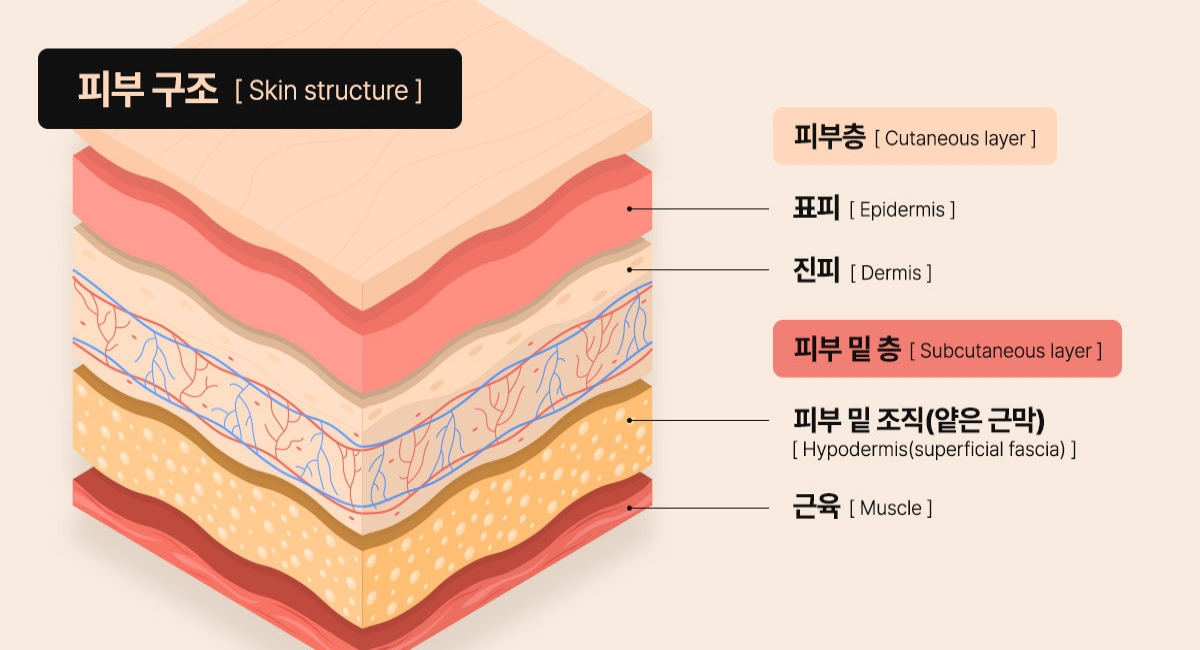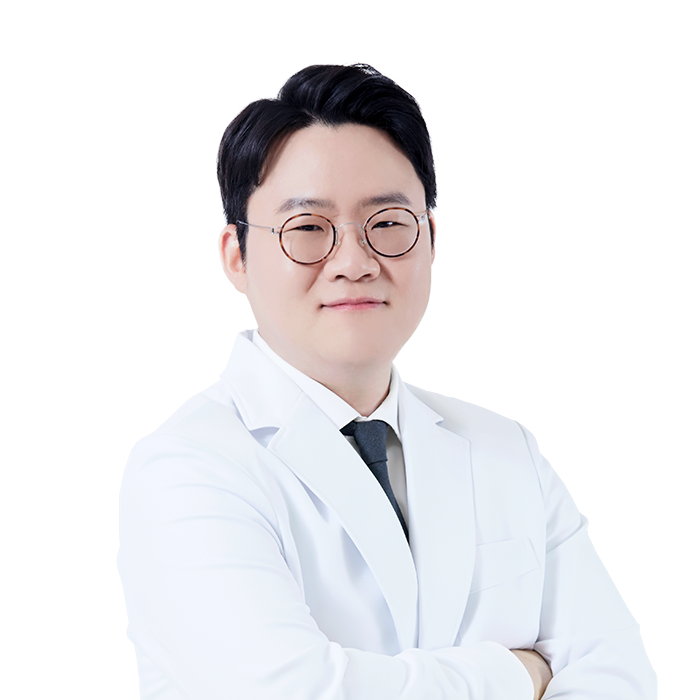Title
Autologous Dermal Graft, Rhinoplasty Implant: Selecting the Right Approach to Avoid Any Potential RegretsDate
2023-11-20Views
2346
Medical Column

I'm Dr. Ma Sung Hwan, plastic surgeon specialist at AB Plastic Surgery, Korea.
In this article, I'll address the limitations of autologous dermal graft in rhinoplasty, a topic that has been frequently inquired about during our in-person consultations.
Is it more advantageous to get rhinoplasty with an autologous dermal graft than with an implant?
Unlike an implant, with a dermal graft approach, it can be hard to observe any changes that may occur on the nose after the surgery because the absorption process starts from the moment it is grafted into the area.
As shown in the image above, the overall structure of the skin is comprised of two primary layers – the epidermis and dermis – which also include the superficial fascia and subcutaneous fat. The process of rhinoplasty, which involves using an autologous dermis, typically entails harvesting from the dermis layer. Nevertheless, given the variances in dermis thickness for each individual, it may be necessary to harvest it from alternative areas such as the subcutaneous fat or superficial fascia layer.
Other than that, in autologous dermal graft rhinoplasty, the harvested dermis varies depending on the area it will be grafted. For the nose bridge, it is generally sourced from the buttocks area, while for the nasal tip, it is obtained from the region behind the ear or the buttocks. In some rhinoplasty procedures utilizing autologous rib cartilage, the dermis is occasionally harvested from the skin that was involved in harvesting the rib cartilage during surgery. It's worth noting that, during this process, the actual volume, height, etc. of the dermis will not remain constant, and absorption will occur gradually.
The absorption process of autologous dermis typically takes around 1 year and a half, during which half of the grafted amount is absorbed. The remaining dermis will remain permanently. After the absorption, the remaining dermis will remain permanently. It's essential to note that the absorption rate and timeframe of autologous dermis can vary from person to person. This variability can make it challenging to predict the final outcome accurately, presenting limitations in rhinoplasty procedures. Moreover, using grafted autologous dermis at the nose bridge may result in a soft, flesh-like feel when touched due to its soft tissue nature, which differs from the firm and well-defined outcome associated with an implant.
Therefore, if the patient has specific preferences for their rhinoplasty, such as a high and doll-like nose bridge and tip, utilizing the autologous dermal graft approach is not advisable. However, if the nasal skin has thinned due to multiple rhinoplasties previously or there is a risk of side effects, the autologous dermal graft approach may offer more benefits than using an implant.
To ensure that you make the best decision for your surgery, rather than deciding to proceed with an implant in advance, it is important to have a clear understanding of your current nose condition, which surgical approach is compatible with your case, and other important factors through consultation with a plastic surgery specialist to determine the direction of your surgery.
If you have any further questions about rhinoplasty, you can contact us at 02-512-1288 or through WhatsApp or KakaoTalk at +8210-4393-1298 for a more detailed consultation.
 Writer: Plastic surgery specialist, Dr. Ma Sung Hwan
Writer: Plastic surgery specialist, Dr. Ma Sung Hwan





